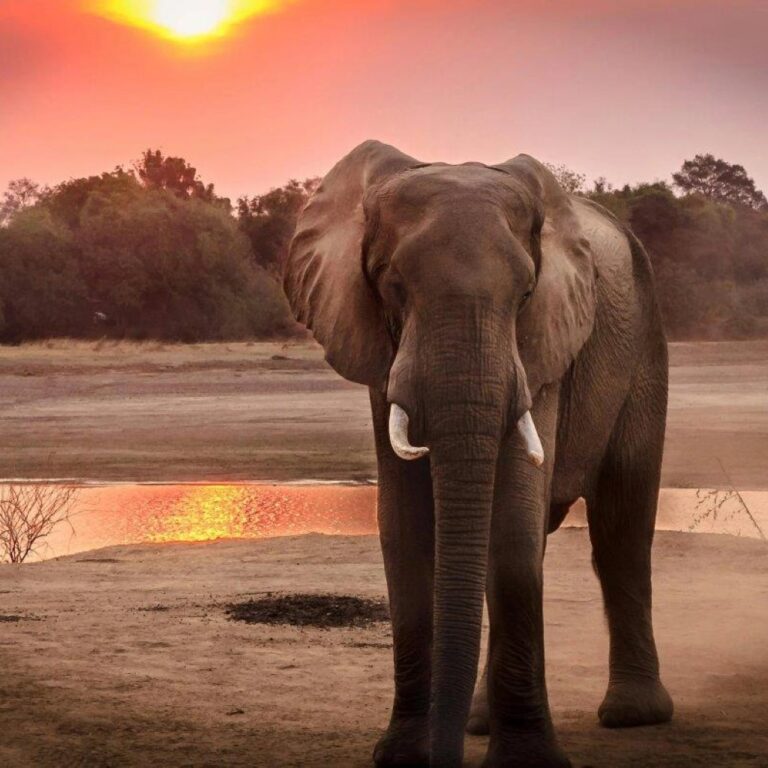There are three species of elephants: the African bush elephant, the African forest elephant, and the Asian elephant. African elephants are larger and have bigger ears, while Asian elephants are smaller with rounded ears.
Elephants have the largest brain of any land animal, weighing up to 5 kilograms (11 pounds), and they are highly intelligent, exhibiting behaviors such as problem-solving, tool use, and self-awareness.
Elephants have an incredible memory and can remember the locations of water sources and migration routes over long distances and many years.
An elephant's trunk is a versatile tool made up of over 40,000 muscles. It is used for breathing, smelling, touching, grasping, and producing sounds, as well as for sucking up water and food.
Elephants are highly social animals that live in matriarchal herds, led by the oldest and most experienced female. The herd consists of related females and their offspring.
Elephants communicate using a variety of sounds, including rumbles, trumpets, and low-frequency infrasound, which can travel over long distances and are used to communicate with other elephants out of sight.
Elephants are known for their empathy and have been observed comforting distressed herd members, mourning their dead, and showing altruistic behavior toward other species.
An adult elephant can consume up to 300 pounds of food and 50 gallons of water in a single day, primarily feeding on grasses, leaves, fruits, and bark.
Elephants are capable swimmers and use their trunks as a snorkel when crossing deep water. They are known to enjoy playing and bathing in water to cool off and clean their skin.
The gestation period for an elephant is about 22 months, the longest of any land animal, and calves are born weighing around 220 pounds.
Elephants use mud and dust as sunscreen to protect their sensitive skin from sunburn and insect bites. They often cover themselves in a layer of mud after bathing.
The tusks of elephants, which are elongated incisor teeth, are used for digging, lifting objects, gathering food, and defense. Unfortunately, they have also made elephants a target for poaching due to the ivory trade.
Elephants play a crucial role in their ecosystems by creating water holes used by other animals, dispersing seeds, and shaping landscapes by knocking down trees and clearing vegetation.
Elephants have been revered in many cultures and are often associated with wisdom, strength, and good fortune. In Hinduism, the god Ganesha is depicted with the head of an elephant.
Despite their size and strength, elephants face significant threats from habitat loss, human-wildlife conflict, and poaching, leading to declining populations in many parts of the world. Conservation efforts are crucial to protect these magnificent creatures.



